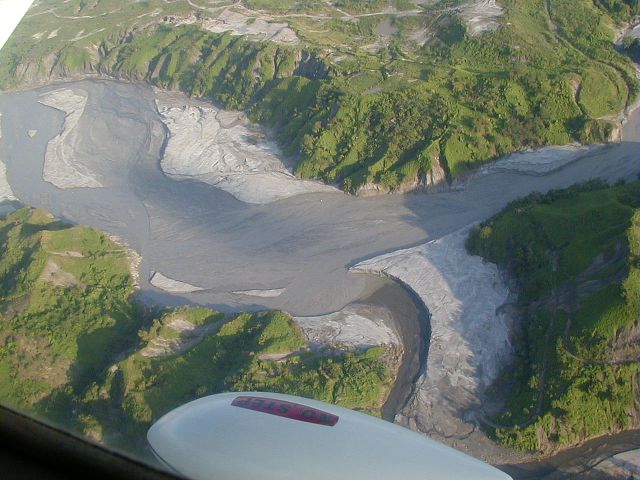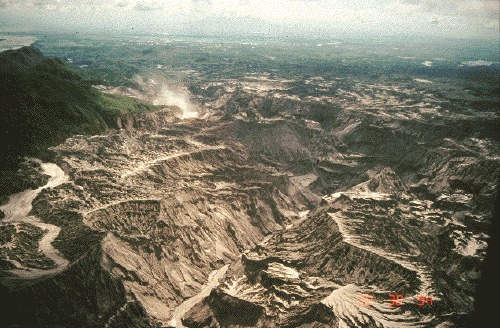According to the Jewish Encyclopedia, the first use of the name "Sambatyon" occurs in the Targum of pseudo-Jonathan to Ex. xxxiv. 10: "I will remove them from there and place them beyond the River Sambation."
Some think the name "Sambatyon" may be related to an earlier Sabbaticus river mentioned by Josephus and Pliny described as flowing according to a weekly schedule but Josephus states the river flows only on the Sabbath opposite what is said in other traditions. Neither Pliny or Josehphus describe a river of sand or stones. Josephus links the river with Jews during the time of Titus but not specifically with the Ten Tribes. Since the earliest times there has been disagreement on whether the Sambatyon and Sabbaticus rivers were related.
The first mention of a river of sand and stones connected in some way with the "lost tribes" actually occurs in Islamic literature. A group known as the "people of Moses" is mentioned in the Quran, and the commentator Muqatil bin Sulayman (767 CE) associates them with the lost tribes. He further places the people of Moses, numbering 70,000, beyond a river of sand in China. Several hadith tell of how the people of Moses dug a tunnel from the Temple Mount to or beyond China where they lived pious lives, and where Muhammed introduced them to Islam during his "night journey."
Muqatil b. Sulayman called the land of the people of Moses by the name Ardaf. The name resembles the location Arzaf mentioned in 4 Ezra 13 as the place to which the Ten Tribes escaped.
Ezra has a dream where a fire-breathing messianic figure arises from the stormy sea and carves a great mountain for an apocalyptic battle. After vanquishing a great host that had come against him on the mountain with a stream of fire from his mouth, the savior figure calls another "peaceable" multitude, an event widely interpreted as indicating the return of the Ten Tribes.
And, whereas, thou sawest that He gathered another peaceable multitude unto Him; those are the Ten Tribes which were carried away out of their own land in the time of Osea (Hoshea) the King whom Shalmaneser the King of Assyria led away captive, and he carried them over the waters, and so they came into another land. But they took this counsel among themselves, that they should leave the multitude of the heathen, and go forth into a further country. where never mankind dwelt, that they might there keep their statutes, which they never kept in their own land. And they entered into the Euphrates by the narrow passage of the river; for the Most High then showed signs for them, and held still the flood till they were passed over. Through that region there was a long way to go, a journey of a year and a half; and that country is called Arzaf [Latin Arzareth]. "Then they dwelt there until the last times; and now, when they are about to come again, the Most High will stop the channels of the river again, so that they may be able to pass over."
The Jewish traveler Eldad Hadani around the ninth century CE, mentions the people of Moses (beney Mosheh) living beyond the river of sand giving a complete tale combining many elements of the Hebrew and Islamic versions. Again, the Sambatyon River acts as a barrier sequestering the Ten Tribes and preventing their return to Israel.
Jewish texts like Pesikta Rabbati and Genesis Rabbah mention the tunneling story but in this case it is God who creates a tunnel from the land beyond Sambatyon which allows the Ten Tribes to return to the Mount of Olives in Jerusalem.
Eldad Hadani describes the thunderous noise made by the Sambatyon:
"...the river is full of large and small stones, thundering with stormlike, deafening noises by day and by night; it can be heard a day's journey away. The river flows with its noisy stones and sand all the six days of the week; on the Sabbath it ceases and rests until the termination of the Sabbath."
This and similar descriptions have led researchers like David Kaufmann to suggest that the flowing sand and stones were caused by volcanic action. In Ma'ase Nissim, Gershon Halevi states while traveling in India that two days from Seviliah he encountered the Sambatyon:
The belief that the Ten Tribes were held back both by the Sambatyon and also the Euphrates, and were able to cross these rivers only with the intervention of God brings to mind verses in Revelation which tell of the drying of the Euphrates to make way for the Kings of the East. In some accounts of Prester John, who is closely linked with the Ten Tribes beyond the river of sand/stones, it is said that his failure to reach Jerusalem was caused by his inability to cross the Euphrates.
At some locations, I noticed a fire burning; other places appeared as rising smoke, and I was told that this is the smoke of the Gay Hinnom, like the mountains of Sicily in Italy. As we approached the town, which is near the Sambatyon, we heard turbulent, thundering noises. The closer we came to the town, the more deafening the noises became. Upon my inquiry I was told that this was the roar of the Sambatyon.
Google satellite view of a modern-day "river of sand," the
Pasig River near Mt. Pinatubo south of Clark Field.

Pictures of the Sacobia-Bamban river

http://www.clarkab.org/photos/a35.jpg

http://pubs.usgs.gov/pinatubo/punong1/fig9b.jpg
Regards,
Paul Kekai Manansala
Sacramento
References
Singer, Isidore; Alder, Cyrus; (eds.) et al. The Jewish Encyclopedia, Funk and Wagnalls, New York, 1901-6.







0 comments:
Post a Comment